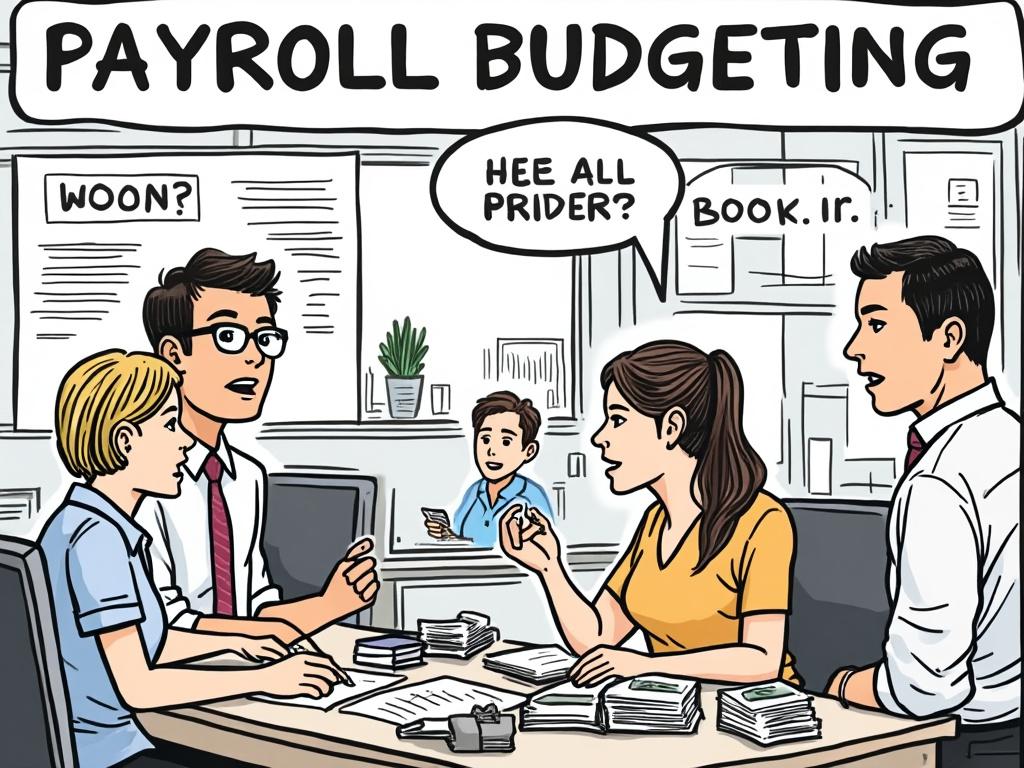
Managing Payroll Expenses: Budgeting for Employee Costs
Reading time: 12 minutes
Ever stared at your payroll reports wondering where all the money went? You’re not alone. Managing payroll expenses is like conducting an orchestra—every component must work in harmony, or the whole performance falls apart. Let’s transform your payroll budgeting from a monthly headache into a strategic competitive advantage.
Table of Contents
- Understanding the True Cost of Payroll
- Strategic Budgeting Framework
- Breaking Down Employee Cost Components
- Advanced Forecasting Strategies
- Cost Optimization Without Compromise
- Leveraging Technology for Efficiency
- Your Payroll Mastery Roadmap
- Frequently Asked Questions
Understanding the True Cost of Payroll
Here’s the straight talk: Your employee’s $60,000 salary doesn’t actually cost you $60,000. Most business owners discover this the hard way when their first quarterly tax bill arrives like an unwelcome surprise party.
The Hidden Multiplier Effect: Industry research shows that the total cost of an employee typically ranges from 1.25x to 1.4x their base salary. That means your $60,000 employee actually costs between $75,000 and $84,000 annually.
Real-World Case Study: TechStart’s Wake-Up Call
Consider Sarah, who founded a software startup with five developers at $80,000 each. She budgeted $400,000 for salaries but faced a cash crunch six months later. Why? She hadn’t accounted for the additional $140,000 in employer taxes, benefits, and compliance costs. Her lesson: Always budget for the total employment cost, not just salaries.
The Anatomy of True Employee Costs
Let’s dissect what really drives your payroll expenses:
- Base Compensation: 70-75% of total cost
- Payroll Taxes: 8-12% (FICA, unemployment, workers’ comp)
- Benefits: 10-15% (health insurance, retirement contributions)
- Administrative Costs: 2-5% (payroll software, HR time, compliance)
Strategic Budgeting Framework
Successful payroll budgeting isn’t about perfection—it’s about systematic preparation. Here’s a battle-tested framework that transforms chaos into clarity.
The Three-Tier Budgeting Approach
Tier 1: Foundation Costs (Fixed)
These are your non-negotiable expenses that remain constant regardless of business fluctuations. Think base salaries, mandatory payroll taxes, and core benefits.
Tier 2: Variable Costs (Flexible)
Components that fluctuate with business performance: overtime pay, commission structures, and performance bonuses.
Tier 3: Growth Investments (Strategic)
Future-focused expenses like training budgets, professional development, and talent acquisition costs.
Payroll Cost Breakdown by Business Size
Breaking Down Employee Cost Components
Understanding each cost component helps you make informed decisions about where to invest and where to optimize.
| Cost Category | Percentage of Salary | Annual Cost ($60K Salary) | Control Level |
|---|---|---|---|
| FICA Taxes | 7.65% | $4,590 | Fixed |
| Health Insurance | 8-12% | $6,000 | Moderate |
| Workers’ Compensation | 1-3% | $1,200 | Variable |
| Retirement Benefits | 3-6% | $2,700 | High |
| Unemployment Insurance | 0.5-2% | $900 | Low |
The Benefits Balancing Act
Benefits aren’t just expenses—they’re investments in retention and productivity. According to the Society for Human Resource Management, companies with comprehensive benefits packages see 40% lower turnover rates. But here’s the key: alignment matters more than abundance.
Quick Scenario: Imagine you’re deciding between offering premium health insurance or flexible work arrangements. Which delivers better ROI? Recent surveys show that 88% of employees value flexibility over premium benefits, yet flexibility costs significantly less to implement.
Advanced Forecasting Strategies
Predicting payroll expenses isn’t fortune-telling—it’s strategic planning based on reliable patterns and indicators.
The Rolling 12-Month Model
Instead of annual budgets that become obsolete by March, use a rolling 12-month forecast that updates quarterly. This approach helps you:
- Identify seasonal patterns in overtime and temporary staffing
- Plan for anticipated salary reviews and promotions
- Account for business growth and hiring timelines
- Prepare for regulatory changes affecting payroll taxes
Scenario Planning: Preparing for Multiple Futures
Smart payroll budgeting considers three scenarios:
Conservative Scenario (70% probability): Modest growth with current staffing levels plus 5-10% natural increases.
Optimistic Scenario (20% probability): Rapid expansion requiring 25-40% additional staff within 12 months.
Stress Scenario (10% probability): Economic downturn requiring strategic workforce reductions.
Cost Optimization Without Compromise
Reducing payroll expenses doesn’t mean sacrificing quality talent. It means becoming more strategic about how you invest in people.
The Efficiency Multiplier Approach
Manufacturing company GreenTech faced rising labor costs but couldn’t afford to lose skilled workers. Their solution? They invested $50,000 in automation tools that reduced manual payroll processing time by 60%, allowing their HR team to focus on strategic initiatives. The result: same headcount, 30% improvement in productivity metrics.
Smart Timing Strategies
Staggered Hiring: Instead of bulk hiring, spread new employees across quarters to smooth cash flow impact.
Benefits Optimization: Review insurance renewals annually and consider self-funded health plans for companies with 50+ employees.
Tax Timing: Maximize tax credits for hiring veterans, apprentices, or employees from targeted groups—these can offset 25-40% of first-year wages.
Pro Tip: The 80/20 Rule for Payroll
Focus your optimization efforts on the 20% of costs that drive 80% of your budget variance. Typically, this includes overtime management, benefits utilization, and turnover-related expenses.
Leveraging Technology for Efficiency
Modern payroll management isn’t about replacing human judgment—it’s about augmenting it with data-driven insights.
Automation ROI: Beyond Time Savings
Payroll automation delivers measurable returns:
- Error Reduction: 90% fewer calculation mistakes
- Compliance Assurance: Automatic tax updates and filing
- Real-time Reporting: Instant access to cost analytics
- Scalability: Handle 10x growth without proportional staff increases
Integration Excellence
The most effective payroll systems integrate seamlessly with your existing tech stack. Look for solutions that connect with your accounting software, time tracking systems, and HR platforms. This integration eliminates data silos and provides comprehensive workforce analytics.
Your Payroll Mastery Roadmap
Ready to transform your payroll budgeting from reactive scrambling to proactive strategy? Here’s your systematic action plan:
Phase 1: Foundation Building (Weeks 1-2)
- Audit your current payroll costs using the true cost formula (salary × 1.4)
- Implement the three-tier budgeting framework
- Establish baseline metrics for tracking and comparison
Phase 2: Strategic Enhancement (Weeks 3-6)
- Deploy rolling 12-month forecasting with quarterly updates
- Develop scenario plans for conservative, optimistic, and stress situations
- Evaluate and optimize your benefits package ROI
Phase 3: Technology Integration (Weeks 7-8)
- Research and implement payroll automation solutions
- Establish real-time reporting dashboards
- Create automated alerts for budget variance thresholds
Phase 4: Continuous Optimization (Ongoing)
- Monthly variance analysis and course corrections
- Quarterly strategy reviews and scenario updates
- Annual comprehensive payroll audit and optimization
The payroll landscape continues evolving with remote work trends, gig economy growth, and changing regulatory requirements. Companies that master strategic payroll budgeting today position themselves for sustainable competitive advantage tomorrow.
Your next move: Which phase resonates most with your current challenges? Start there, but remember—payroll mastery isn’t a destination, it’s an ongoing journey of strategic refinement. How will you turn your payroll expenses from a cost center into a competitive advantage?
Frequently Asked Questions
What percentage of revenue should payroll expenses represent?
Industry benchmarks vary significantly by sector and company size. Service-based businesses typically allocate 50-70% of revenue to payroll, while manufacturing companies average 20-35%. The key is consistency with your industry peers and maintaining profitability margins. Track your payroll-to-revenue ratio quarterly and compare against industry standards rather than aiming for arbitrary percentages.
How can I reduce payroll costs without laying off employees?
Focus on efficiency improvements rather than headcount reduction. Implement flexible work arrangements to reduce overhead, optimize benefits packages for better value, cross-train employees to reduce overtime needs, and automate routine processes. Consider temporary salary reductions for leadership in exchange for equity, restructure commission plans to align with performance, and negotiate better rates with benefits providers through group purchasing.
When should I outsource payroll versus keeping it in-house?
Outsource when your company has fewer than 20 employees, lacks dedicated HR expertise, or faces complex multi-state tax requirements. Keep in-house when you need tight integration with other systems, have unique payroll requirements, or employ 100+ people where economies of scale favor internal management. Consider hybrid approaches where you handle processing but outsource tax filing and compliance updates.


